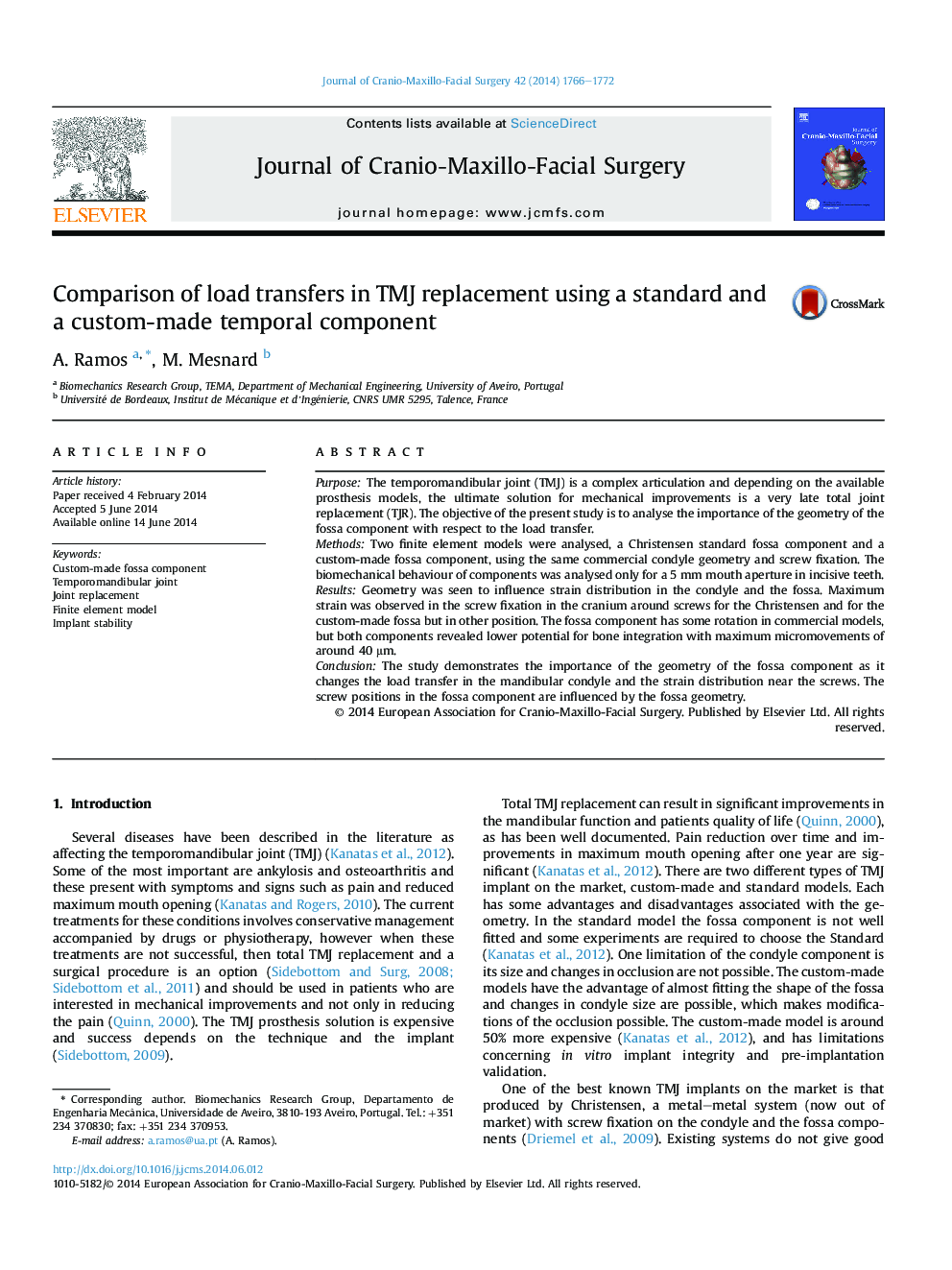| Article ID | Journal | Published Year | Pages | File Type |
|---|---|---|---|---|
| 3142741 | Journal of Cranio-Maxillofacial Surgery | 2014 | 7 Pages |
PurposeThe temporomandibular joint (TMJ) is a complex articulation and depending on the available prosthesis models, the ultimate solution for mechanical improvements is a very late total joint replacement (TJR). The objective of the present study is to analyse the importance of the geometry of the fossa component with respect to the load transfer.MethodsTwo finite element models were analysed, a Christensen standard fossa component and a custom-made fossa component, using the same commercial condyle geometry and screw fixation. The biomechanical behaviour of components was analysed only for a 5 mm mouth aperture in incisive teeth.ResultsGeometry was seen to influence strain distribution in the condyle and the fossa. Maximum strain was observed in the screw fixation in the cranium around screws for the Christensen and for the custom-made fossa but in other position. The fossa component has some rotation in commercial models, but both components revealed lower potential for bone integration with maximum micromovements of around 40 μm.ConclusionThe study demonstrates the importance of the geometry of the fossa component as it changes the load transfer in the mandibular condyle and the strain distribution near the screws. The screw positions in the fossa component are influenced by the fossa geometry.
